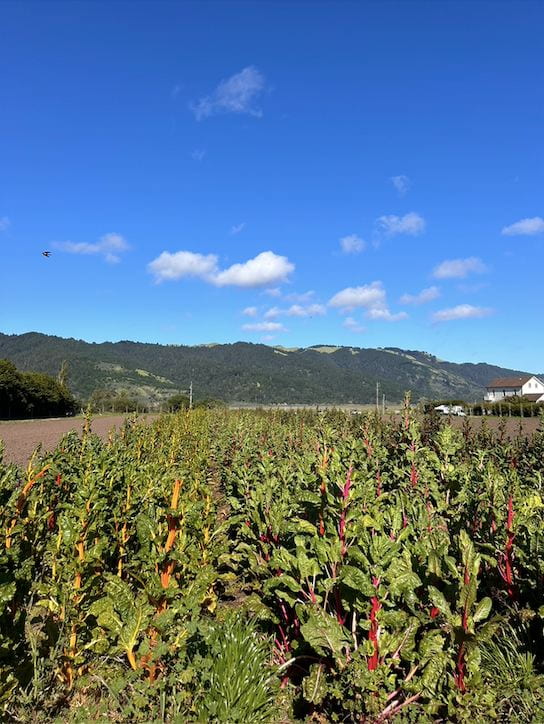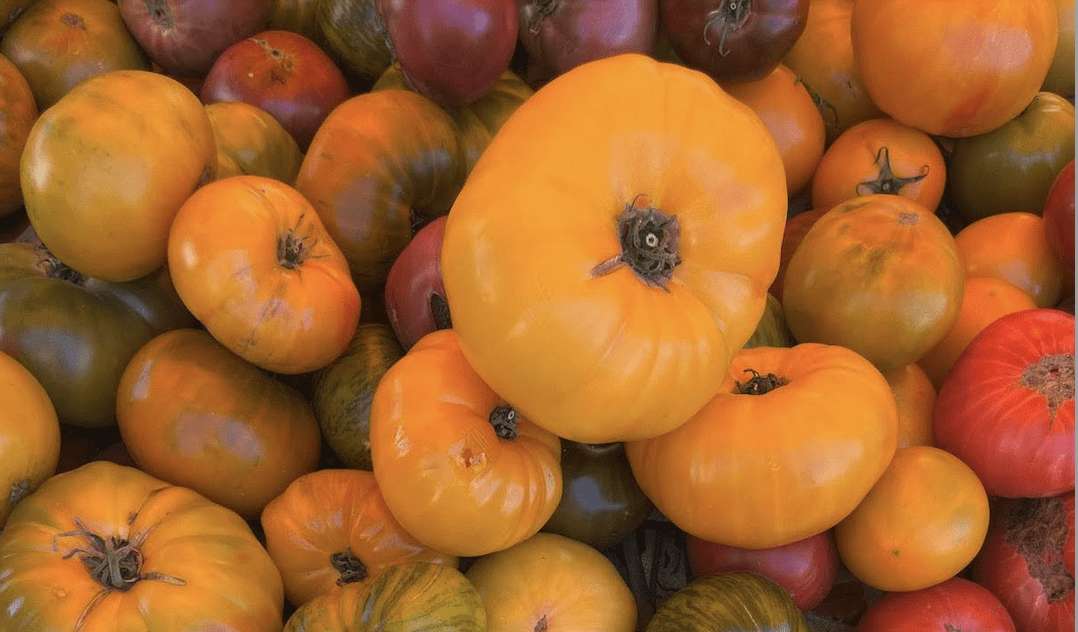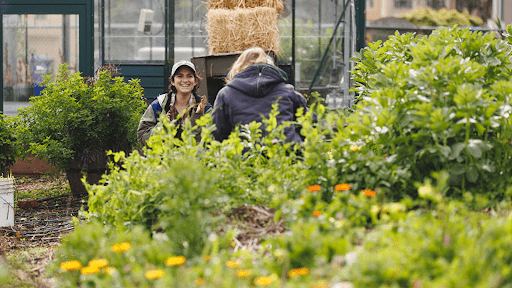Vertical Farming: The Future of Growing Up
It has been made clear that the Earth’s population is rapidly increasing. With this growth, are all other aspects that sustain human life able to keep up? When it comes to farming and food production, this may not be so. Our planet’s population is growing at a rate far faster than our ability to produce food and feed people (A Five-Step Plan to Feed the World). Looking just at the next thirty years, it is estimated that we will need to feed ten billion people on Earth, all the while dealing with issues like climate change and reduced water and arable land, issues that can pose limitations on our ability to grow food (Vertical Farming: Why Growing up Can Make a Difference). Not only are we dealing with an overall increased population on this planet, but more and more people are expected to populate urban areas. It is estimated that in 2050, two out of every three people are expected to live in urban areas (Federman and Zankowski). By understanding the planet’s rising population, both overall and in urban areas, it is possible to address growing global food demands in a way that is sustainable and environmentally responsible.
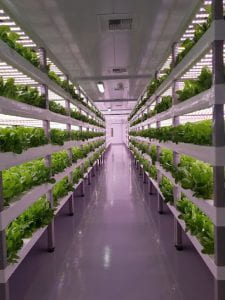
Image by Oasis Biotech via https://www.usda.gov/media/blog/2018/08/14/vertical-farming-future
Straying from the traditional framework of farming, new agriculture technology has been emerging to tackle issues of food shortages and increased carbon emissions that come with population growth. These ideas have focused on the concept of urban farming, essentially where fresh greens and vegetables are grown close to or within urban populations, in a way where less water is used, runoff is reduced, produce has higher nutrient content, and there is overall less emissions throughout the distribution chain (Federman and Zankowski). The latest innovation in urban agriculture is vertical farming, essentially where crops are able to be grown on top of each other, rather than horizontally. Vertical farming is arguably the most appealing type of farming when it comes to its low emissions and minimal resource use and offers a possible solution in response to our planet’s rapidly growing human population.
Before diving deeper into this new advancement in urban farming, it is important to first take a closer look at the current and more traditional farming practices within our global food production systems. Traditional farming, the predominant style of food production and farming used by more than half of the global population, essentially relies on soil as the primary growing medium (Kamprad). Grown next to each other on fields, produce from this type of agriculture have raised concerns about extensive land, water, and pesticide use. While traditional farming methods are essential in aspects like preserving different cultures around the world, there are still many environmental concerns that come with it. Namely, traditional farming practices are drivers behind many global environmental challenges, including climate change, deforestation, water shortages and food accessibility issues (Kamprad). In response to these issues, as well as trends in urban population growth, urban farming has emerged.
Purdue University defines urban farming as “a practice of raising food in urban or suburban areas, alongside the hustle and bustle of city life” (Kamprad). What separates urban farming from traditional farming, aside from the obvious locational differences, is the range of shapes and forms urban farming can come in. This includes hydroponics, aquaponics, community gardens, and more. Within these urban farms, the practice of Controlled Environment Agriculture (CEA) has emerged, which is a type of farming defined by advanced growing spaces where factors like humidity, temperature, and light can be controlled and manipulated to best support the needs of specific plants (Vertical Farming: Why Growing Up Can Make a Difference). As mentioned previously, the latest innovation in CEA is vertical farming. The concept of vertical farming, where plants are grown upward rather than outward, allows for space to be conserved, resulting in a higher crop yield per square foot of land used. This type of farming is perfect for urban areas, where there is not much land available, especially for farming, but plenty of room to grow upwards.
Although vertical farming seems to be a rather new innovation in urban agriculture, it has actually been around for many years. The Babylonians pioneered the first prototype of the vertical farm nearly 2,500 years ago, utilizing hanging gardens for aesthetics as well as to maximize growing space (Vertical Farming: Why Growing Up Can Make a Difference). It is also worth taking a look at the use of fruit walls in France and the Netherlands in the 1600s, where the practice of growing fruit upward along stone walls allowed the fruit to be able to capture and release heat, ultimately helping it thrive in the Northern European climate (Vertical Farming: Why Growing Up Can Make a Difference). Coming back to the present, vertical farming has become more advanced and modernized from these earlier practices, as we see through the efforts of two vertical farms: Bowery Farming and Eden Green Technology.
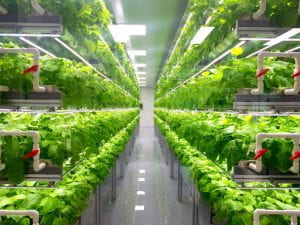
Image via shutterstock.com/YEINISM
Vertical farms like Bowery Farming place rows of crops on top of each other in stacks, all of which are contained in an indoor warehouse. Different from traditional farming which uses soil to grow crops, Bowery’s vertical farms utilize hydroponics, where a wider variety of crops can be grown, and is different from soil, which is bound to one geographical location (Vertical Farming: Why Growing Up Can Make a Difference). This hydroponics system uses nutrient rich water and energy efficient LED lights in place of sunlight. Through practices that include the recirculation of water, the reduced use of pesticides, and safety from pathogens, local communities are able to access a secure, fresh, and consistent supply of food, all the while water is conserved and there is less impact on ecosystems compared to traditional farming (Vertical Farming: Why Growing up Can Make a Difference). It is clear that Bowery’s vertical farming system has many advantages and benefits, from dramatically increasing productivity per acre, using fewer resources, and reducing transportation, being from a more urban location. However, Bowery Farming has expressed that vertical farming cannot feed the world on its own (Vertical Farming: Why Growing up Can Make a Difference). The population is still growing at a very rapid rate, so it is essential for vertical farming and traditional farming to work together to feed the population.
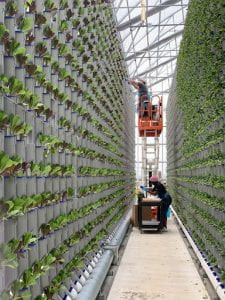
Image via https://www.edengreen.com/blog-collection/environmental-impact-of-traditional-and-vertical-farming-2021-report
Very similar to Bowery Farming is Eden Green Technology (EDT), an agricultural service that offers vertical farming technology. The main difference with EDT is that instead of using warehouses, as Bowery does, they utilize locally placed greenhouses “equipped with the most sustainable vertical farming technology” as the location of their vertical farms (Vertical Farming & Hydroponics Greenhouses). While Bowery Farming uses artificial LED lights, EDT’s location of greenhouses works with natural sunlight to grow produce. The main reasons for the use of greenhouses are that they take up less space, leverage sunlight, and EDT claims that the plants are healthier due to exposure to natural sunlight (Vertical Farming & Hydroponics Greenhouses). This vertical farming means more harvests and less waste, where 98% less water and 99% less land is used than traditional farming, zero food waste is accumulated, and 90% less light energy is used when compared to vertical systems using artificial lighting (Vertical Farming & Hydroponics Greenhouses).
Both vertical farms, although different, have shown that it is possible to make progress towards feeding the planet’s growing population in a way that is more sustainable and environmentally aware than traditional farming. While it may not be entirely possible for vertical farming to be the sole source of food for billions of people on Earth, it does take a step in the right direction in prioritizing both humans and the health of our environment.
Works Cited
Federman, Sarah, and Paul Zankowski. “Vertical Farming for the Future.” USDA, 25 Oct. 2021,
https://www.usda.gov/media/blog/2018/08/14/vertical-farming-future.
“A Five-Step Plan to Feed the World.” Feeding 9 Billion, National Geographic,
https://www.nationalgeographic.com/foodfeatures/feeding-9-billion/.
Kamprad, Dennis. “Urban Farming vs Traditional Farming: What’s the Difference?” Impactful
Ninja, https://impactful.ninja/urban-vs-traditional-farming-differences/.
“Vertical Farming & Hydroponics Greenhouses.” Eden Green Technology,
https://www.edengreen.com/vertical-farming.
“Vertical Farming: Why Growing Up Can Make a Difference.” In The Farm, Bowery Farming, 9
Mar. 2022, https://boweryfarming.com/vertical-farming/.
